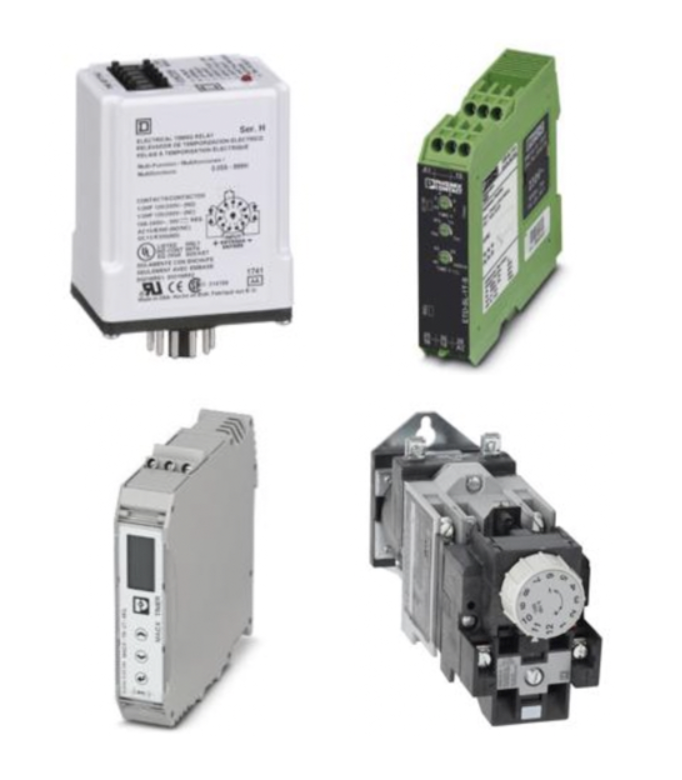Time Delay Relays

Timed relays are special devices for controlling the timing of electrical circuits. They do this by introducing a predetermined delay between the activation of a signal and the response of the connected load. These relays are critical in applications where staggered startup, sequential control, or timed shutoff is required. Timed relays function by using an internal timer to delay the opening or closing of relay contacts until some predetermined moment has arrived. This allows them to manage voltage or power flow in a circuit with precision.
Typically, when triggered, a time delay relay begins counting according to its delay time setting. Once the delay time elapses, the relay either energizes or de-energizes its contacts, depending on how it's been programmed. You can adjust a time-delay relay to meet specific circuit needs, and they come in many timing cycle ranges, from fractions of a second to several minutes. They're often connected to components like lights, motors, or alarms to provide a measure of good circuit design against unexpected surges or to enforce proper sequencing in the start-up operations of a circuit.
More Information about Time Delay Relays
Because of their versatile time delay functions and ability to protect sensitive devices, time delay relays are used in both AC and DC systems. For example, in a vehicle or an automation installation, a timer delay relay can be used to allow a fan to run for a short time after the ignition is turned off. Some time delay relay units have user-adjustable settings and visual indicators like LEDs to show what the relay is doing at any given time. Not only can the user make a relay up to 10 times as reliable and efficient as a relay with no time delay, but they can also make the user's up to 10 times as reliable and efficient as a relay with no time delay.
FAQs
Do time delay relays come with a battery installed or will a customer need to purchase one to complete their setup?
Most time delay relays do not come with a battery installed, as they are typically powered by the circuit’s voltage, so customers generally do not need to purchase a separate battery for setup.
Time Delay Relay Basics
ON Delay Relays
When the coil in a normal relay is energized, the contacts are instantly closed, allowing the current to pass through. When the coil in an ON delay relay is energized, the contacts are delayed for a given period of time, before they close. A common use for an ON delay relay is to reduce the inrush current when powering on several devices at once. The ON delay relay can power on one device slightly later than another device. This can prevent too much inrush current that might blow a fuse or trip a breaker in an electrical circuit.
OFF Delay Relays
OFF delay relays are similar to ON delay relays, however, the delay occurs when the coil is de-energized. When the coil is energized, the contacts instantly close. When the coil is de-energized, there is a delay before the contacts open. A common use for OFF delay relays is when using motors with fans. When the motor is turned off, an OFF delay relay allows the fan to continue cooling the motor for a given period of time before turning off.

